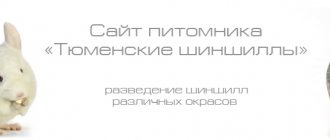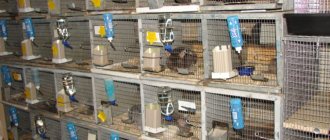The chinchilla is a small herbivorous rodent with thick and soft fur. It is not difficult to have such an animal as a pet. It is unpretentious in food and maintenance, and its life expectancy in captivity is on average 10-12 years. Exotic rodents can bring their owner not only positive emotions, but also a good income.
The value of chinchillas is due to their very thick and dense hair. The fur is so thick that it doesn’t even harbor parasites. Chinchillas do not shed, and their fur does not cause allergies. Therefore, its cost is much more expensive than the cost of arctic fox, mink or sable fur. The demand for items made from chinchilla fur is growing, while materials often have to be imported from abroad. Competition in the market of the Russian Federation and CIS countries is low, which significantly increases the chances of a successful business in raising and breeding these animals.
You can breed chinchillas at home for sale. Many people love these cute furry animals, but buying them at the bird market is dangerous. The cost of one individual fluctuates in a fairly wide range - from 1,000 rubles. up to 40,000 rubles, and sometimes higher. It all depends on the color, quality of fur, size or gender.
The most important thing about such a business idea is that there is no need to rent premises or hire workers. You can set up a mini-farm for growing chinchillas right at home.
Where to start breeding chinchillas as a business at home
In addition to the fact that you need to acquire at least a couple of individuals, you have to complete the following activities:
- Develop a business plan for raising chinchillas at home.
- Prepare a room intended for the farm.
- Purchase the necessary equipment: food, sawdust, cages, toys.
- Place animals on the farm and provide them with a comfortable stay.
- Think over legal ways to receive income from the sale of products: register a business, determine the appropriate tax regime, understand the reporting.
IMPORTANT
: For the cultivation and sale of this type of product, permission from regulatory authorities and licenses are not required.
You need to understand how to breed chinchillas at home. In 1 year, the female produces up to three litters. One litter can have 1-3 cubs. With relatively small capital investments, starting a business requires a large time investment. However, the return on investment is high.
Affiliate program for chinchilla breeding
Naturally, many would like to start such a business, but are not sure whether they can do it, do not know where and how to buy chinchillas for breeding, do not have practice in caring for them, and do not understand feed. And most importantly, the problem of further marketing of animals is of concern. What to do with young chinchillas that will appear in the near future?
There is an affiliate program for beginning chinchilla breeders. In accordance with it, you can not only buy the best chinchillas for breeding from us, but also receive all the relevant instructions, assistance, purchase food at a reduced price and all other support. You can start with a small number of specimens or buy several dozen if you wish.
It is important to emphasize that the program for attracting partners solves sales problems for business newcomers: you will hand over all the young stock to us. It is beneficial for us that our partners do well; our partners are guaranteed constant income and business development. If, after reading this article, you are interested in chinchillas and are thinking about starting such a business, we will be happy to help you make a choice and become our partners.
Chinchillas and business in Russia are profitable and reliable!
More details on our affiliate program - here
Selection and preparation of premises
Despite the fact that chinchillas are extremely unpretentious, you should approach the choice of premises responsibly. A number of conditions must be met:
- One individual needs about 0.3 m2 of area;
- permissible room temperature – 18-20 degrees;
- air humidity should not exceed 60%;
- it is important to make sure there are no drafts;
- the room must be clean;
- there should be little light, rodents do not like bright rays;
- The level of noise and harsh sounds should be minimal.
Take care of regular cleaning and ventilation. The appearance of mold or mildew in the room is unacceptable. The best solution would be to fence off the chinchilla farm from other buildings. Remember, animals are very shy, especially during the mating period.
Purchase of cages and equipment
Having prepared the room, proceed to purchasing a cage and related equipment. Avoid any wooden parts - rodents will quickly make short work of them. It is forbidden to paint the room, as animals cannot tolerate the smell of chemicals very well.
The optimal cage size can be considered 50/50/60 cm. You can purchase a larger enclosure - it all depends on how many individuals you plan to have. The main condition is about 30 cm2 per individual. Males and females can be housed in pairs or separately, it all depends on the method of reproduction and the nature of the pets. Chinchillas are very agile rodents, so the cage should have small cells so that they cannot get out of it. When choosing a cage, pay attention to its safety and ease of cleaning. Experienced breeders place 6 cells in 2 rows. With this arrangement, the required area will be about 18 m2.
You will need:
- Sippy cup. It is best to choose hanging drinking bowls with automatic water supply.
- Hopper type feeder.
- Bath for bathing with sand. It should be spacious enough with closed sides.
- Bed or house.
- A house for a female during childbirth.
- Tray at the bottom of the cage.
- Toys - running wheel, tunnels, balls.
- Trainers for teeth. These can be mineral stones or pumice.
Remember that pets need to jump and move a lot, so make sure that the house has various shelves and perches. The distances should not be large so that the animal does not damage its paw when landing.
10 places where animals are given into good hands
Charitable Foundation "Bim" The Foundation is already 25 years old, and now it has five shelters in Moscow. Any assistance in the form of food, medicine or finance is recorded in the register of charitable parishes. To pick up a pet, you need to leave your contact details and take time to think, and if you decide that you are definitely ready, they will bring it straight to your home. The shelters also contain rabbits, horses, a cow, a wolf and even a lion - they are not adopted, but you can visit them. www.moscowbim.ru
Nika Foundation A private organization unites two shelters (“Nika” and “Santa”) and exists on the money of the founders and donations. Mostly cats and dogs live here - they are regularly vaccinated and examined by doctors. The Foundation deliberately does not publish the addresses of shelters to avoid provocations. However, employees will tell you everything in detail by phone: 8 (925) 080 1125, 8 (962) 915 2139, 8 (903) 795 8974. And advice for “young” owners can be found on social networks. vk.com/ournika
Shelter for rodents "Ovsovye" "Ovsovye" was created by the married couple Olga and Vasily Sigunov in order to shelter and rehome abandoned and pet store rodents. Here you can not only adopt a rabbit, hamster, guinea pig or chinchilla, but also leave the animal while you leave. To do this, you need to “equip” the animal with a supply of food and a cage. Well, if you decide to part with your pet, by prior agreement you can bring it here for further adoption. True, you will have to make a financial contribution for his maintenance and treatment. vk.com/club40221658
Charitable animal shelter "Alma" After the recent arson, one of the oldest shelters in Moscow is gradually acquiring new enclosures and cabins. About two hundred dogs live here and are looking for new owners. In addition to mongrels, in Alma there are collies and terriers - all these are pets that were once abandoned or planted. The shelter is located in the southeast of the city, but the address, for obvious reasons, is not indicated on the website. shelter-alma.nethouse.ru
Animal Assistance Fund “Forest Shelter” In addition to cats and dogs, gerbil mice, rabbits, ravens and other living creatures live here. Each pet has a veterinary passport and undergoes regular examinations. You can also come here to interact with animals or bring the necessary medications. Constant contact with humans gradually socializes the animals, which means they get used to their new owner more easily. lesnoj-prijut.ru
Charitable Foundation “Love Animals” The foundation has more than one hundred and fifty cured and adopted animals. Volunteers themselves bring the dog or cat they like to your home. And there is a logical explanation for this - employees look at the conditions in which the animal saved by their efforts will live. Social support for the Love Animals Foundation is provided by the Obereg veterinary clinic; every person who “adopts” a pet receives a 10% discount on services here. vk.com/club38411295
Shelter "Gore and Co" This dog shelter not only accepts all possible help from sympathizers, but also happily places doggies in good hands. Both mongrels and purebred inhabitants live here. The site has photographs of some of them with detailed descriptions and character traits of the pets. take-dog.narod.ru/index.html
International Charitable Foundation “Givers of Hope” On the website you can get information about which shelters the foundation works with and how to help animals. The addresses of special collection points for gifts for animals are also indicated. But most importantly, in the “adopt a dog/cat” section you can find the very pet you have been dreaming of for so long. ghope.ru
Shelter “Call of the Wild” This shelter keeps a log of visits and donations, which can be found on the website. And in order to adopt an animal, you need to draw up an agreement indicating your passport details. Pets are given away free of charge, and employees bring the animals home themselves to make sure that their ward will be in good hands. zovpredkov.ru
Forum “Dog and Cat” Here you can discuss the problems of our little brothers, find out where to get veterinary care, how to care for your pet, and what dangers await a person who decides to adopt or adopt a dog or cat. The forum constantly monitors dubious organizations that, under the guise of charitable foundations, pocket donations. There is even a special form with which you can check a questionable phone. pesikot.org
Features of choosing and purchasing breeding stock
Once you have prepared the room and cage, it is time to start purchasing livestock. For a home mini-farm, it is enough to purchase 2 males and 10 females. Such a set can produce 70-80 young animals in 1 year.
Many breeders and farms provide temporary males for mating - consider these options.
There is an opinion that chinchillas should be bred monogamously, i.e. form pairs and let them breed separately. This method has a number of advantages, but is more expensive.
Buy young animals only from large and trusted breeders. This way you will protect yourself from buying a sick animal. In addition, breeders can provide a guarantee and a breeding card.
Chinchilla breeding
The female is ready for reproduction at the age of 4-7 months, the male at 7-9 months. In breeding conditions, one female can bear offspring without harm to health for 8 years. An older female will also produce offspring, but the cubs will be weaker and sicker.
Mating usually occurs at night. If fertilization has occurred, you will find tufts of fur and small waxy flagellum in the cell. Next, the female will gain approximately 100g. every two weeks. A pregnant female should be given more vitamins. The gestation period is 104-115 days. A couple of weeks before giving birth, the female needs to equip a room with sawdust and block the road to the bathing bowl. Monitor the behavior of the male; if he interferes, he should be isolated.
Childbirth usually takes place in the morning and no human intervention is required. When breeding polygamously, the male should be isolated from the female and the young for a couple of weeks. With the monogamous method, the male can be left in the cage. However, remember that immediately after giving birth, the male will try to cover the female again. One female can become pregnant up to 3 times a year, so make sure that her health is not compromised.
Young animals weigh from 30 to 70 g. Newborn babies are able to move independently. Milk feeding lasts up to 60 days, after which the young animals can be weaned from their mother. If the female does not have milk, the babies are transferred to one who has recently whelped, or are transferred to artificial feeding.
I'll give you a pet rodent for free
- all announcements
- Real estate
- Animals
- Transport
- Housing
- Child's world
- Household appliances and electronics
- Personal items
- beauty and health
- Acquaintance
- Job
- Education, sports, recreation
- Construction and repair
- Services
- Industry and manufacturing
- New Year's goods and services
- Other miscellaneous
- I'll give it away/I'll accept it
- \
- Animals in Russia Dogs
- Cats
- Birds
- Fish
- Rodents
- Reptiles and amphibians
- Farm animals
- Other animals
- Goods for pets
- Animal services
- \
- Rodents
- \
- I'll give it to you
| I will buy | I'll give it to you | I'll accept it as a gift |
Subscribe to new announcements
Search by parameters
Hide search options
| Price | rub. | ||||||
Total 3 pages 1
Next >
| Cute domestic Djungarian hamsters I will give into good hands or sell for a nominal fee cute domestic Djungarian hamsters…. | |
| I'll give two rats, girls, into good hands. I'll give two rats, girls, one litter, into good hands. I will give it along with the cage (house, two bridges, hammock, drinking bowl, food cup and tray), food, sawdust. I’m giving it away due to my child’s allergies…. | |
| I will give a Syrian hamster to good hands for free I will give a small Syrian hamster for free along with a new cage The hamster is already trained to drink and eat... | |
| Degus in good hands, free of charge, boy and girl Two degus are looking for a home, a boy and a girl, were thrown into the trash by their previous owners, now in foster care. You can pick up one or both, I’ll give you food in addition if you take two or the last one... | |
| I will give the rabbit to good hands for free. I have an allergy to the rabbit, I will give it away with a cage. Gender: male, no passport or vaccinations. I wouldn't give it away... | |
| 2 | Hamsters, dwarfs, two boys. I'm giving away two Djungarian hamsters for free. Their names are Milkas and Mouse. The animals came from friends who had gone abroad. Their children (three boys aged 6, 8 and 11 years old) took care of the hamsters. An excellent gift for children. I’m giving it away along with the cells…. |
| 2 | Free Syrian hamsters in Korolev Free Syrian hamsters, 2 boys and 2 girls, born on June 1st. White with dark spots and a red-black boy. Healthy, accustomed to the tray and drinking bowl, unpretentious in food and care. Calm disposition. Korolev Moscow region... |
| I will give a rabbit and a guinea pig to good hands I will give a guinea pig and a mini rabbit to good hands and cages with all the accessories... | |
| 7 | Rats in good hands from two offspring, standard, Moscow, Krasnogvardeiskaya I am putting rats in good hands from two offspring, standard, Moscow. Offspring from 04/10/21: 1. Beige girl 2. Beige girl with a spot on her head (no photo) 3. Beige boy 4. Gray girl 5. Gray girl (no photo) 6. Gray boy 7… |
| 2 | I will give 2 decorative rats to good hands. We are forced to part, we are giving two rats to good hands: a light male, neutered + a black girl, about a year old with a portable cage, food…. |
| Djungarian hamsters are in good hands I will give the hamsters. Age from 1.5 to 6 months. Big choice. Delivery throughout the region. Consultations…. | |
| I will give away hamsters for sale or home. I will give hamsters for sale or for home keeping, white, red, 5 weeks, 7 pcs…. | |
| Gerbils as a gift, that is, free of charge. I will give two gerbils to girls along with a cage containing a drinking bowl, a wheel and other accessories. The reason is that our cat has declared a war of extermination on them and will still get his way sooner or later. It's just a shame... | |
| The gerbils are given away free of charge to good hands. We give away the gerbils for free, born on 07/08/20, come and pick them up. Call us and we'll tell you everything... | |
| I will give Djungarian hamsters into good hands I will give hamsters, 6 were born. Dzunguriki breed, all questions by phone, call after 9 pm... | |
| I’ll give it away for free, into good hands, a girl rat I’ll give a rat, a girl into good hands, due to the move, the girl is 4 months old, dark in color, very cute, friendly... | |
| 2 | I will give guinea pigs and a decorative rat. I will give good people two guinea pigs and a decorative rat. All boys. They love to be talked to, picked up and stroked. We open the cage for the pigs and they go out for a walk around the apartment. Communication with them is very calming and uplifting ... |
| 3 | I'll give my decorative rabbit to good hands! Decorative rabbit. Age 4 months. Girl. Tame, affectionate and smart, loves to play, toilet trained. I'll give the rabbit, free of charge, into good hands... |
| I will give away a young hamster urgently at any time. Boy, age 8 months. Active blond. Cheerful, well-fed, moderately fluffy. I'm giving it away due to active reproduction. I have no strength to endure anymore. There are more and more of them. The cat is scared... | |
| I will give away a purebred rabbit for free. I will give away a decorative rabbit for free to a one-year-old girl of the minor breed. I’m leaving it in good hands because I’m moving…. |
Total 3 pages 1
Next >
Care and maintenance of chinchillas at home
The chinchilla is unpretentious and does not require careful care. It is enough to clean the cage daily and ensure the availability of fresh water and food. The bedding in the cage should be changed once a week. Once every six months it is worth checking the cage for integrity and disinfecting it. Wet cleaning of the premises is recommended once a month.
You can buy food in specialized stores or prepare it yourself by mixing different types of grains. In addition to cereals, chinchillas love hay and dry dandelion leaves. In summer, you can add fresh grass to your diet. In winter, animals are given carrots and apple pieces. Feeding occurs once a day in the evenings. For 1 animal there is up to 50g. stern. If there is a lack of sunlight, add liquid vitamin D to the food.
Sale of chinchillas, markets for products
The best option for home farms is the sale of live animals. Your clients can be individuals, stores or wholesale buyers.
Sales can be divided into the following categories:
- Realization of marriage. Culled chinchillas are a common occurrence on chinchilla farms. We are not talking about weak and sick animals. Rejects are those individuals that are not suitable for reproduction, or those whose fur turns out to be of poor quality. Clients in this case can be bird markets, pet stores or individuals who want to get an exotic pet. The cost of sales will depend on the average prices in your region. As a rule, it is low - from 2,000 to 5,000 rubles. for one animal.
- Sales of breeding animals. It is possible to raise chinchillas intended for breeding. In this case, the clients will be beginning breeders or farms that require breeding material. The cost of implementation here is much higher. It all depends on the breed, age, gender, external parameters.
- Fur sales. This type of implementation is preferable for large farms with a population of 300 males or more. It is the fur of male chinchillas that is considered to be of higher quality and is used in the production of various products. Clients are large fur studios in big cities. Cost – from 7,000 rubles.
- The most profitable market for chinchilla fur is auctions. The cost of one skin when traded under a hammer can reach tens of thousands of rubles. However, to get into this niche, as a rule, a home chinchilla farm is not enough. Larger production volumes and animals of rare and valuable breeds are required.
Chinchillas and business in Russia
In Russia, the first chinchillas appeared only in the 90s of the last century. And, despite the turn to entrepreneurship, no one is yet engaged in breeding these valuable fur-bearing animals and wonderful pets on a significant scale. This type of business is only at the very beginning of its development; it has one more additional positive factor: the complete absence of competition
- Studio for sewing chinchilla fur coats in Russia - No!
- There are no large farms offering a large selection of chinchillas!
- The number of modern mini-farms for breeding chinchillas is extremely insignificant!
For a Russian entrepreneur, the chinchilla business is profitable, especially its breeding direction. It is beneficial both from the point of view of selling animals for domestic keeping and from the point of view of fur production. World statistics show the following indicators: in the world there is a need for 800,000 skins annually, but today the existing animal population and fur farms together are capable of producing only about 280,000. At the largest international fur auctions - there are five of them in the world - for a chinchilla always special demand .
A report from one of these auctions - the Copenhagen auction, Kopenhagen Fur - states that at auction in September 2012, 14,406 chinchilla skins were sold at an average price of about 300 DKK, that is, more than 30 euros per skin, with some specimens reaching the price of more than 50 euros per skin. This shows that it is not at all difficult to enter the world market with chinchilla skins. But the Russian market is also completely unfilled, open, and free from competition. All this guarantees excellent prospects for business development.
Possible risks
When planning this type of business, be sure to consider all possible risks. The biggest danger is the loss of animals. The disease of the entire livestock can lead to very unpleasant consequences. Despite the fact that chinchillas are not susceptible to diseases, they require careful care. When purchasing a new individual, monitor its behavior for a couple of days. Poor nutrition can lead to illness. Under no circumstances should you wash animals with water - this will make their fur worse.
Considering competition as a risk for doing business does not yet make much sense. Chinchilla breeding has not yet become widespread and this niche remains relatively free. However, it is still worth monitoring the state of the market in your region; perhaps there is a large breeder and seller of these animals very close by. Don't be afraid of competition, observe and learn from positive experiences.
How a shelter for chinchillas appeared in Pushkino and what came of it
Spartak Furman did not intend to organize his own animal nursery. But one day a new animal, not even immediately identified, appeared in his house. It’s hard to say who was luckier that day: the exhausted chinchilla, who was about to give her soul to God, or the man who, with her help, found what he loved. The Moscow Region Week correspondent went to visit the breeder and his pets to find out how they live together.
Be careful, escape!
The entrance to the house, where almost a hundred chinchillas live, is blocked from below by a shield. By some miracle, the owner manages to notice how someone’s shadow is hiding behind the enclosures. Spartak, with his usual movement, takes out three fugitives from the gap between the cells. The chinchilla is a nimble animal. And also smart: she uses every opportunity to go AWOL with maximum benefit for herself. Particularly savvy people find ways to open the locks on their homes.
“She’s fast, but timid,” said the owner of the nursery, carefully placing all the caught animals in their homes. — When you catch a chinchilla, it starts to throw off tufts of hair in panic. You need to grab them by the base of the tail, or at least by the ear. When we still lived in an apartment and there were few chinchillas, I bought a net to catch them if they ran away.
How the first chinchilla that came into the family ended up on the street is unknown. Five years ago, a breeder's daughter found her in a trash heap.
“At first we didn’t understand what kind of animal this was,” recalls Spartak. “They even thought it was a rabbit.” She was wounded and frail. We looked at the photos on the Internet, figured it out, and went to the veterinarian. Cured. Now her name is Gerda.
She still lives happily in the nursery, has had two boyfriends and regularly brings offspring to her rescuers.
Kai is here too. He was bought as a pair for a selected girl who, unable to overcome her natural habit of living in a pack, became very bored. The gentleman turned out to be harmful, and in order to avoid fights, after the first birth he was placed in another cage. The couple broke up, and Chip came to marry Gerda. By this moment, Spartak finally realized that the gray animals had sunk into his soul.
Chinchilla man who?
The nursery houses chinchillas of different colors and with different biographies. Spartak specifically took some from other breeders - he has an equally enthusiastic and more experienced friend, zoologist Alexander Kozlov, living in Troitsk. Someone had to be saved from people.
“One boy was given to me when he was three months old; he was missing part of his tail,” says Furman. — People buy animals and either treat them carelessly, or troubles happen... I had this happen - they took a healthy animal, then they called: there was an injury. The paws are broken or something. There is a boy who has only one toe left on his hind paw. When I picked it up, I thought it was all broken. A separate cage, plenty of food, no stress - he seems to be on the mend. Then we look - for some reason it is swollen. Treated with leeches! This is what the doctor advised, and it helped.
A new animal from inattentive owners arrives at the nursery approximately once a month. It is difficult to treat chinchillas, since veterinarians know much less about them than about cats and dogs. Spartak Furman found his doctor in Ivanteevka when he first came to see Gerda. In the cage of Natalya Ipatova, who undertook to examine the former tramp, sat two animals of no less sad fate. Their owners dropped them off right under the clinic door. Spartak has not yet brought new residents to the doorstep.
Printer storm
While we are figuring out which animal in the nursery is tame and which is not, someone carefully tugs on my sleeve from behind. I turn around: one of the local pets with the most mischievous expression on its gray muzzle is trying to eat my jacket.
“Everyone has their own character,” Spartak smiles, while the unexpected gentleman and I figure out who is right. – Some are phlegmatic, some are nimble. Some people like to sit in their arms, while others may bite if you reach for them. If you want the animal to get used to being petted, you need to pay attention every day.
A chinchilla and a person can coexist together in much the same way as a cat with its owner: it can be a soul-to-heart relationship with an evening sitting on the arms or, conversely, with sudden surprises in the form of an unplanned pogrom. The second option in the nursery is best illustrated by Kai.
“He ran away once, and then we dealt with the consequences,” said Spartak. — I needed to print something, but the printer didn’t work. I double-checked everything, and finally decided to look at the cable. I look - it’s been chewed through! Chinchillas, if you are not careful, can easily damage your purse, wallpaper, or furniture. Their teeth grow throughout their lives, and they are very sharp. There should always be twigs and wooden blocks in the cage so that the animal can sharpen its teeth.
Pride without prejudice
The owner of the nursery decided to take care of chinchillas seriously despite the fact that he is allergic to dust. It is difficult for him to clean his cages because they contain sand, hay, and sawdust. But sometimes assistants come to Spartak. A chinchilla rescuer lectures children at a local leisure center and some of them learn how to handle the animals from him. The most stubborn one, Grisha, has already done vaccinations for rodents together with the owner of the nursery.
“This is just my hobby,” admits Furman. – I usually work as an administrator at a children's center. I just really love chinchillas. We will go to the exhibition in February. I have bred animals that I am proud of. But I still love Gerda most of all.











